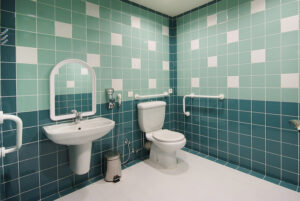Assistive Devices to Consider for Better In-home Living
When deciding to live at home, there are plenty of preparations that you need to think about. Besides a caregiver visiting your home on a daily basis and assisting you with personal care, you will need to make certain home modifications and purchase assistive devices. These devices will help improving the quality of your life overall, and give you a certain degree of independence.
Bathroom & Bathing Assistive Devices
- Walk-in Bathtubs – an extremely helpful solution for people with limited mobility. Besides making bathing independently more accessible, such a bathtub is also much more safe, secure and comfortable than a shower cabin.
- Double Rail Handles for the Shower – very helpful for people with a disability, or those exposed to the risk of falls in the home. The rail handle allows you to get a firm grip of it and feel secure while you are standing or sitting on a shower chair. This type of assistive device has been developed to help people with limited mobility entering and exiting the shower or the tub. Amputees, stroke victims, patients with dementia or those with a disability will find the rails quite useful.
- Toilet Lifts – there are many such products available, and they are intended for use by seniors or people with limited mobility who need assistance when sitting down or getting up from the toilet seat.
Bedroom Assistive Devices
- Bed Rails – for assisting with getting out of bed- useful assistive device for patients with limited mobility who cannot get out of bed without getting hold of a firm device. The system is also useful for wheelchair bound patients (getting out of the bed and into the wheelchair with assistance)
- Bed Mobility Systems – such a system provides the elderly/disabled patients with the independence and mobility they need sitting up in the bed, getting in or out of the bed without help from the caretaker.
- Adjustable Bed Rails- advisable for patients who are exposed to the risk of falls. The bed rails will offer the safety and security needed for dementia patients.
- Turning Beds – designed for patients who need to be turned on the side at regular intervals to prevent bed sores. This type of mechanism is also extremely useful for obese patients, or patients with limited mobility who need to be turned into most secure and comfortable sleep positions.
